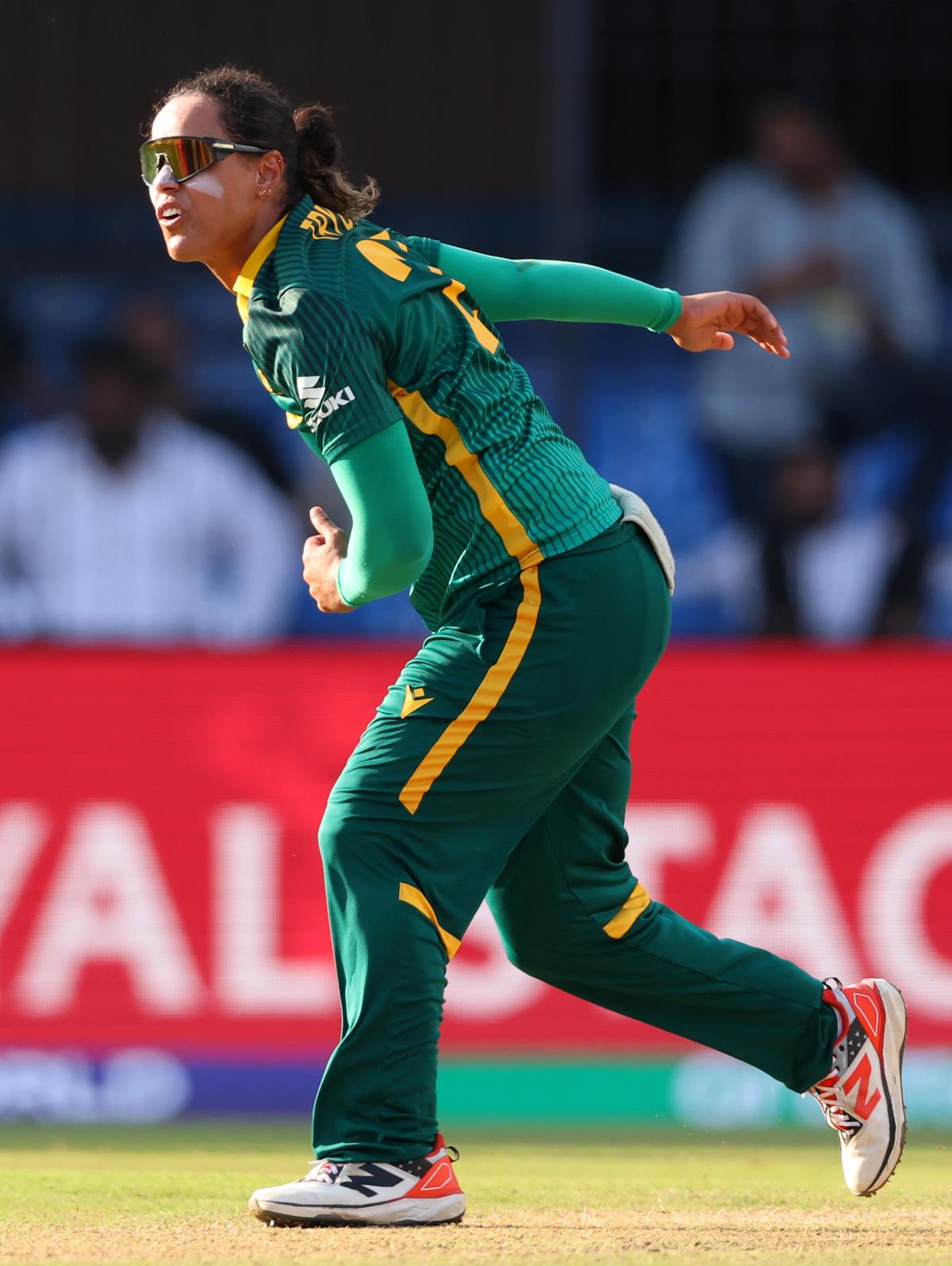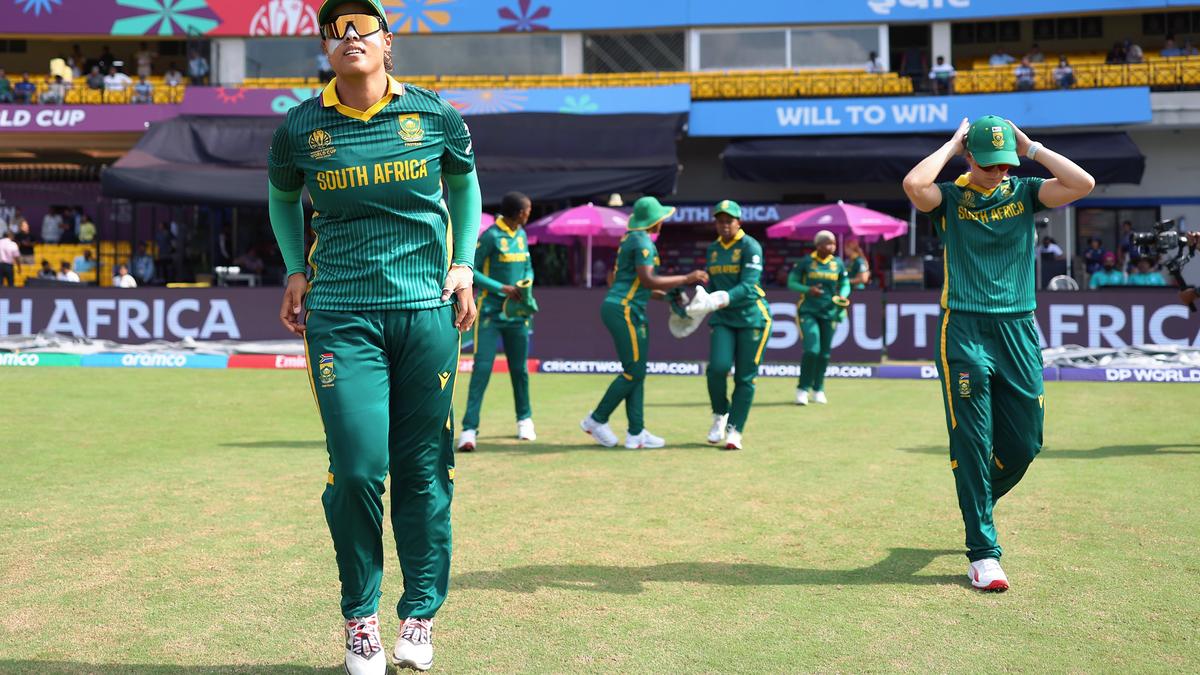In the build-up to the Women’s ODI World Cup campaign in India and Sri Lanka, South African players were asked to write a letter to the tournament.
“Dear World Cup, everything I’ve done in the sport, since I began playing in my backyard, has been about you,” a usually reticent Chloe Tryon began narrating. “South Africans never give up. We never back down and we do it to show the pride and strength of our country.”
A veteran of 117 ODIs and 113 T20Is, the left-arm spin-bowling all-rounder has been a crucial part of both of South Africa’s recent runs to the final – in the home T20 World Cup in 2023 and the next edition in 2024 in the UAE.
The 31-year-old will hope the three-time ODI World Cup semifinalist can better its showing with a dash to the final and potentially even win this time. She talks about her own game, South Africa’s evolution in the game and more in a chat with The Hindu.
Excerpts:
Let’s begin with the 2024 T20 World Cup. It was a heartbreaking result for a spirited campaign. How did you get over it?
It’s never easy losing a final, and losing two back-to-back was very tough. We took a lot of learnings from the one we had in South Africa against Australia. It was tough, in front of a home crowd. We were very positive going into the game. In 2024, there was the prospect of us being that new champion, but we got completely outplayed.
Once everything settled down, we were all together. It was really hard to talk about anything, because in this group, we love talking about cricket and the performances we put up. We’re glad we had each other through that and we had our families around. All that adrenaline just runs out, and you’re just by yourself without the media, without anyone, and just dealing with all the emotions you’re feeling. That can be hard.
We had a couple of weeks at home to think about everything, what we could have done better, and then kind of eventually put it to bed. It always lingers at the back of the mind somewhere, but you can’t dwell on it much. You have to find a way to keep moving forward.
You are playing cricket in the age of criticism, where every move is dissected. How hard does that get?
Yeah, a lot of opinions, you know, a lot of titles as well. It’s important to cut the outside noise or else you carry it with you. Staying insulated was what we wanted to do, and focus on our love for playing for South Africa, one game at a time.
You had a good run with runs under your belt and a five-wicket haul in May during the tri-series featuring Sri Lanka and India at the R. Premadasa Stadium. How has your World Cup preparation come along?
I feel really good. There are still things that I want to improve on. I just want to stay positive about wanting to score runs. When I started my career, I was a bowler and just a pinch-hitter. And I think over the years, how I’ve navigated my game — from not just T20s, but to the 50-over format — and my approach has been a lot better. A little bit of experience has helped me understand my game more. I’ve been working very hard at home. We’ve had a lot of bowling camps which have helped us work on the skill aspect. It’s been long hours but the results are showing.
Did South Africa identify any areas to specifically work on as a team?
If you look at how long 50 overs are, you really want to narrow down the things you want to be good at — making lots of runs and managing good partnerships (with the bat and ball). If I look back at the 2022 campaign in New Zealand, I don’t think we necessarily bowled as well. We spoke about it, about taking wickets in the middle overs and trying to slow the game down as much as we can. In ODIs, you can get a bit lost along the way in the middle.
The non-negotiable is also fielding. We know how crucial that can be in tournament cricket. So how can we still have presence and energy in the field? So it’s just about making sure we do the small things as a group well in all different facets of the game.
As a bowler, what’s changed for you over the last 10-12 months or even the last World Cup cycle?
I am working a lot on control and playing to match situations while still being brave with the ball. Crucial overs are the middle overs. It dictates how the game will go from the 11th over to about the 40th. If you’re not striking as often, you need to keep creating chances and dots to develop that pressure for the opposition.
How do you balance that when pitches are getting flatter everywhere?
I obviously watch a lot of cricket. It’s becoming tougher for bowlers. I don’t know if it must be like full tosses or something that might work. I’m not too sure because, watching that Australia vs India ODI in Delhi, I don’t think I wanted to be a bowler that day. Scores are getting higher, and bowlers have to find ways. But the flipside is that skill levels are improving worldwide. You come up with different plans and rotate strategy.
It‘s an exciting challenge, but one that’s good for the game.
Let’s talk about your captain Laura Wolvaardt. She’s evolved into quite a serious tactician…
It’s been great to see Laura evolve. She came in as a young kid in the 2017 World Cup and took it by storm. The evolution has been meteoric in the last couple of years and that’s been fantastic to see. Captaincy has given her game a little extra something. She’s scoring more runs and doesn’t want to slow down. It’s been great for her and her game and has helped her understand the sport more. She has been good at creating a solid team environment. You need that. Tours can be tough. It’s long patches of time away from home. She’s been pretty good at making sure we kind of do things together, which is a bit nice. She’s really excited for this World Cup. We’re going to rally behind her and support as much as we can.

You’ve had a good run in the franchise assignments, too, in the Women’s Premier League and The Hundred. What have the learnings been?
I haven’t really been writing notes. It’s nice to rub shoulders with the best players in the world, watching them go about their business. You learn how they process things and approach challenges, making it look effortless sometimes.
It’s always nice to play against these people because you know you’re going to play them again. For me, the value is in being able to see the other side of it. You see that these players own their space, which is really good.
Right after the WPL, you all went to your domestic 50-over tournament – the Pro50 – and won that as well with DP World Lions. Why did you choose that?
Yeah, it was straight into it, and the final was my first game for my domestic team. I want to play games for my domestic team. We know it’s not always possible, as we have tours now and then. So, most of the girls miss a lot of fixtures. Going there and making an impact felt very good and I also had Shabnim Ismail alongside me, which made things better. I hadn’t played with her in a long time, and so we decided to do it together.
The competition is good, but a lot of work needs to be done. The games need to be more numerous. We’ve got a great system where the girls are contracted at a domestic level, and it’s so good to see that these girls can narrow down their skills and actually do the sport for a living. We can’t just play 10 games a year. A year has 365 days. How can we still improve it? How can we incorporate senior team players and emerging girls playing for the domestic team? Can we find a slot in the year, a two-week gap, where the national players are all available, because it’s so great to train alongside these girls. When you rub shoulders with a Wolvaardt or a Marizanne Kapp, you stand to learn so much. It automatically helps upskill.
World Cups are a great time to evaluate the health of the sport. As a player, what improvements would you want, particularly in ODIs?
It’s a tough one. The sad part is that so much is dictated by money. We just played a series against Pakistan, and you can see how the skills have improved there. In our second match, we were a bit worried about whether they were going to chase down 320. I sat with Sidra (Amin) at dinner one day and pointed out to her how much their skills have evolved. The youngsters are putting their hands up and are hungry to play.
Money is a sore point because you want your players to be playing as much cricket as they can. You want Bangladesh and all these teams to be playing more, as it will help their game evolve. So the challenges are hard to deal with. But this improvement is exactly why we can’t take any team in the World Cup lightly. Every game is a must-win. Hopefully, going forward, they get more game time and a chance to play against the best in the world more often.
You’ve used the word brave multiple times in this conversation. What does that mean tangibly?
If I had heard that word when I was younger, I probably would have run past the second ball that I faced, simply because I was so eager. Now, that word for me is about owning my space in the middle. Understanding and assessing conditions and knowing the different options I have, and choosing them without fear.
Baakier Abrahams, our batting coach, has helped us understand our game and our performance graphs a lot. It doesn’t always have to be going at it from ball one. Positivity can be in the little things too – strike rotation, positive shots, making sure we’re being proactive. He keeps voicing that. ‘Be brave. If that ball is in your area, play it,’ he’d say. If you look at how Tazmin Brits played in Pakistan, she owned it because she was so brave with her cricket in that series. She was like, “It could be the fifth ball of my innings, but if it’s in my area, then I’m going to hit it.”
That’s where the game has come to now. We’re not sitting back and waiting for opportunities. We’re creating them. That translates to how we operate as a team, too. We need to take games deep. Not allow ourselves to be behind the eight-ball. For me personally, my role in the middle-order is tricky. For me, the messaging is just about spending as much time as I can in the middle and staying till the 50 overs are done. That’s a goal for me in this World Cup.

